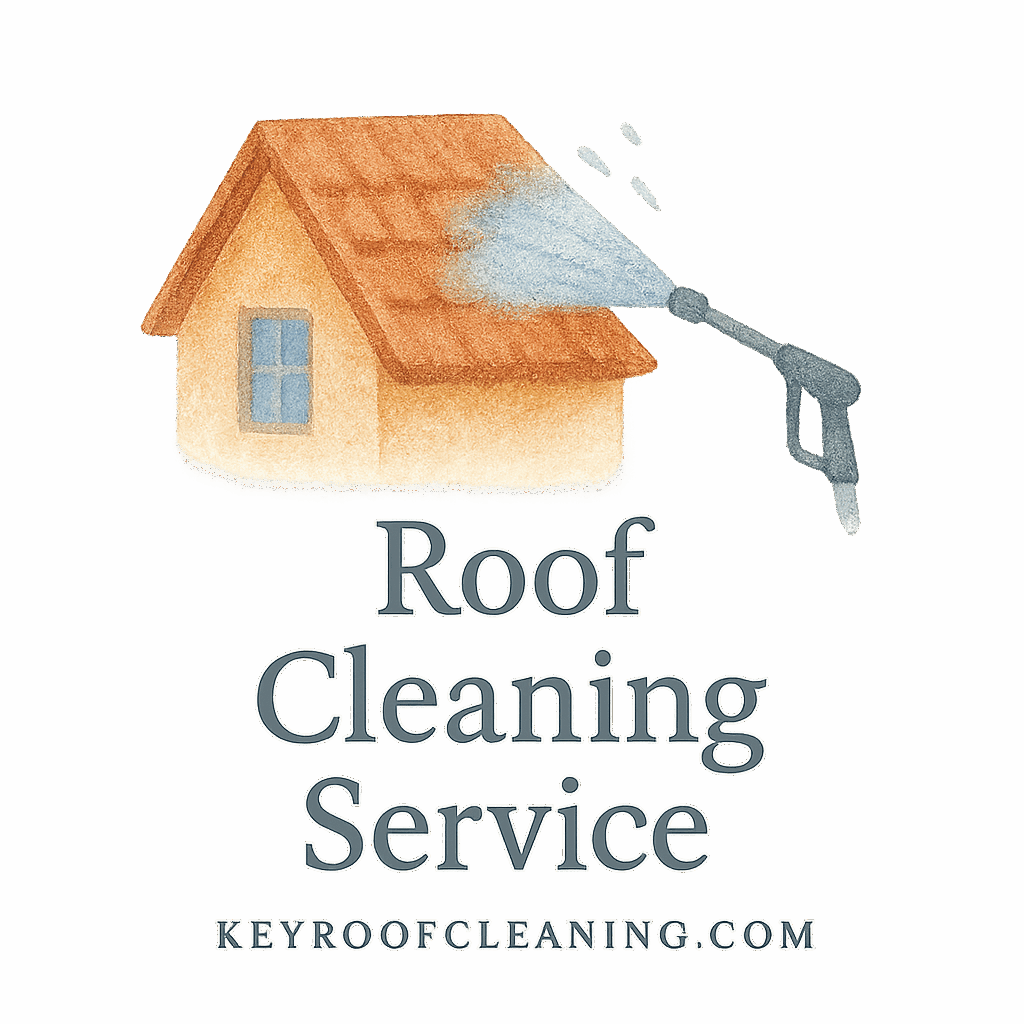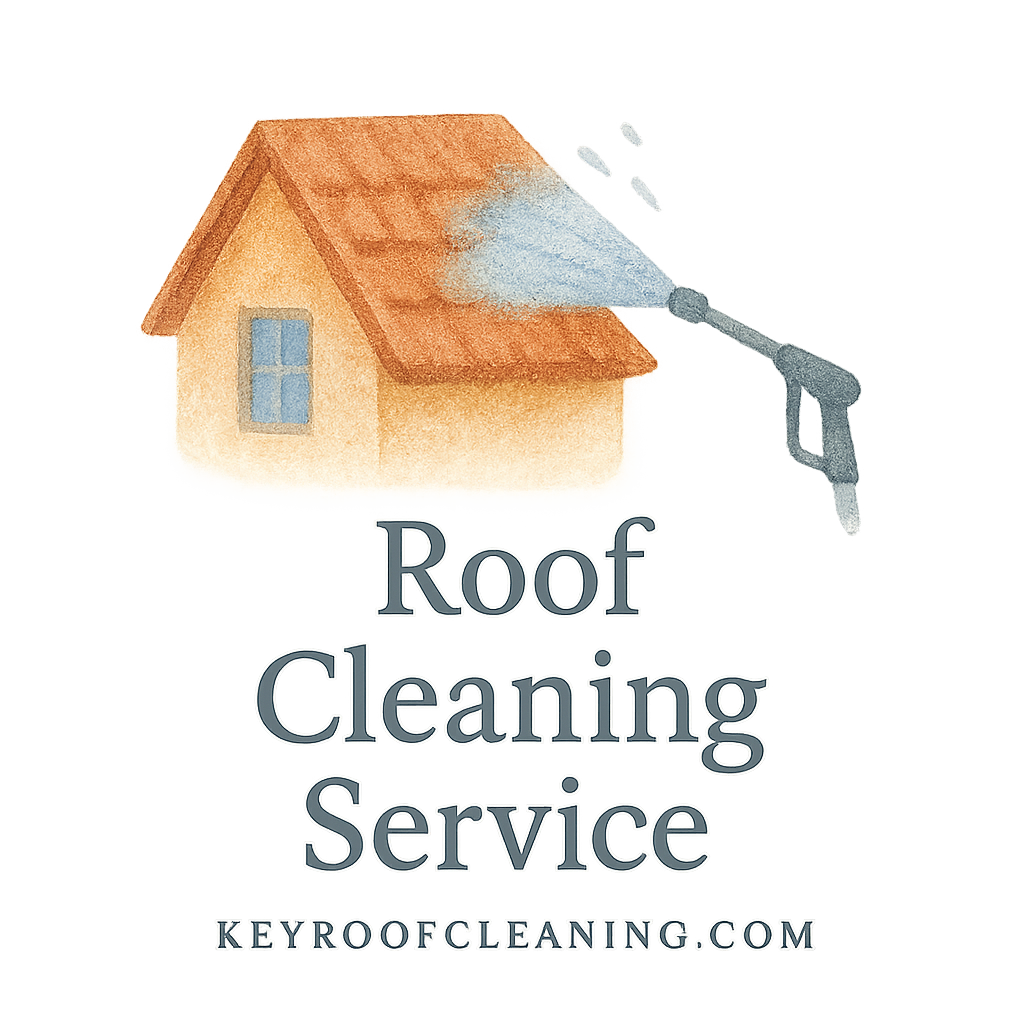Is your roof turning into a green jungle? Algae streaks or fuzzy moss patches might look harmless, but trust me—they’re bad news. Let’s talk about roof cleaning products that kick these invaders to the curb and keep your shingles looking fresh.
Why Algae and Moss Are Bad News for Your Roof
The Silent Invaders: How Algae Takes Over
Algae might seem like nothing more than annoying black streaks, but it feeds on the limestone filler in your shingles. Over time, this weakens your roof, leading to costly repairs or even early replacement. Yikes, right?
Want the basics of why roofs need cleaning in the first place? Check out the basics of roof cleaning.
Moss: More Than Just a Green Carpet
Unlike algae, moss is thick and spongy. It soaks up water like a sponge, holding moisture against your shingles. This can warp or lift them, creating perfect spots for leaks. That’s why having reliable roof cleaning products on hand is non-negotiable.
For safety tips while dealing with moss, browse maintenance and safety guidelines.
How Roof Cleaning Products Fight Back
The Science Behind Roof Cleaning Products
Good roof cleaners use surfactants or oxidizers to break the molecular bonds of algae and moss. They lift the grime off your shingles so you can wash it away easily.
Learn more about the science of roof cleaning techniques.
Are Roof Cleaning Products Safe for All Roof Types?
Tile Roofs Need Special Care
Tile roofs can be beautiful but delicate. Many cleaners are too harsh and can discolor tiles or damage the glaze. Always check labels and stick to methods suitable for tile roofs.
Delicate Roof Materials and Precautions
Wood shake, slate, or certain metal roofs require gentle products. Harsh chemicals can corrode metals or weaken wood fibers. Delicate roofs deserve delicate handling—period!
Explore different roof types and materials for cleaning insights.
Choosing Roof Cleaning Products: Factors to Consider
Biodegradable vs. Harsh Chemicals
Biodegradable products are better for you, your garden, your pets, and the planet. Plus, they help reduce stormwater pollution—a win-win!
Check out eco-friendly solutions and biodegradable options for sustainable living.
DIY vs. Professional-Grade Solutions
Some products are safe for homeowners to use, while others are strictly for pros. The difference? Professional solutions are often stronger but come with safety risks.
Not sure when to call the experts? See our tips on professional service and hiring tips.
The Top 5 Roof Cleaning Products That Remove Algae and Moss
Let’s get to the juicy part: the best roof cleaning products that work wonders on algae and moss.
1. Wet & Forget Moss, Mold, Mildew & Algae Stain Remover
- Type: Non-acidic, bleach-free
- Eco-Friendly: Yes
- Use: Just spray and leave it. Rain does the rinsing.
This is perfect if you hate scrubbing. It’s gentle enough for delicate roofs yet packs a punch on black algae streaks.
Explore other green cleaning methods.
2. Spray & Forget Revolutionary Roof Cleaner
- Type: Biodegradable
- Eco-Friendly: Yes
- Use: Spray it on, no rinsing required.
It’s safe for shingles, tiles, wood, and metal. Great for homeowners wanting less ladder time.
See more green living solutions.
3. Simple Green Oxy Solve Total Outdoor Cleaner
- Type: Hydrogen peroxide-based
- Eco-Friendly: Yes
- Use: Spray on, let it sit, then rinse.
Perfect for tough algae and moss without leaving toxic residue. It’s versatile, too—driveways, siding, decks, and roofs!
Browse tools and products for more cleaning gear.

4. Bio-Shield Roof Cleaner
- Type: Algaecide
- Eco-Friendly: Moderate
- Use: Dilute and apply with a sprayer.
Popular among pros for large-scale jobs. Works fast and keeps algae away for months.
Check out other effective cleaning methods.
5. Defy Roof Cleaner Concentrate
- Type: Oxygenated bleach
- Eco-Friendly: Safer than chlorine bleach
- Use: Mix, apply, and rinse.
Fantastic for roofs with heavy moss infestations. It’s powerful but less toxic than standard bleach solutions.
Find solutions tailored for delicate roofs here: delicate roof cleaning.
How to Use Roof Cleaning Products Effectively
Safety Precautions You Shouldn’t Ignore
Cleaning your roof can be dangerous. Here’s how to stay safe.
Ladder Safety and Fall Prevention
Always use a sturdy ladder, secure it, and never stretch too far. Falls are no joke—ladder safety is critical.
Personal Protective Equipment (PPE)
Wear gloves, goggles, and long sleeves. Chemicals—even the eco-friendly ones—can irritate skin or eyes.
For broader safety advice, review OSHA guidelines and accident prevention tips.
Application Tips for Best Results
- Work on a dry, mild day.
- Rinse plants around the house first.
- Apply your product from the bottom up to avoid streaking.
- Don’t rush—give the product time to work!
Use our handy roof cleaning checklist so you don’t forget a step.
Eco-Friendly Roof Cleaning: The Green Approach
Why Go Eco-Friendly?
Toxic chemicals run off into your yard, harming plants and waterways. Eco-friendly cleaners protect your home and the environment.
Learn more about the environment and how to practice sustainability.
Environmentally Safe Roof Cleaning Products
Look for phrases like:
- “Biodegradable”
- “Non-toxic”
- “Safe for plants and pets”
These are the future of green living and sustainable home care.
When to Call the Pros for Roof Cleaning
Signs It’s Time to Hire Professionals
- Moss thicker than an inch
- Roof leaks
- You’re uncomfortable working at heights
- The roof is old or fragile
Sometimes, hiring a pro saves money and hassle in the long run. Explore when to use professional services.
Finding a Reputable Roof Cleaning Service
Look for companies that:
- Are insured and licensed
- Use eco-friendly methods
- Offer written estimates
- Have good online reviews
Need help? Check out our advice on hiring tips.
Conclusion
Moss and algae might look harmless, but they’re slowly destroying your roof. Luckily, the right roof cleaning products can kick those invaders out without wrecking your shingles—or the environment.
Whether you’re going DIY or calling in the pros, stay safe and choose products that protect your roof and our planet. Ready to reclaim your clean roof? Your shingles will thank you!
Explore more on Key Roof Cleaning’s website for expert advice, product guides, and pro tips.
FAQs
Q1: Are roof cleaning products safe for pets and plants?
Yes—but always check the label. Many modern cleaners are biodegradable and safe for landscaping.
Q2: How often should I clean my roof?
Typically every 1-3 years, depending on your climate and how much shade or moisture your roof gets.
Q3: Can I use bleach to clean my roof?
Bleach works but can damage shingles, harm plants, and corrode metals. Safer alternatives are recommended.
Q4: What’s the best time of year to clean a roof?
Spring and fall are perfect—not too hot, not too cold, and less chance of storms.
Q5: Is pressure washing safe for roofs?
Generally, no. Pressure washing can strip granules off shingles and damage tiles. Soft washing is safer.
Q6: How do I know if moss has damaged my roof?
If shingles look lifted, curled, or if you have leaks, moss may have caused damage.
Q7: Can I clean my roof myself or should I hire a pro?
It depends on your comfort with heights and how severe the problem is. For mild cases, DIY is fine. Heavy moss or large roofs often need a pro.


